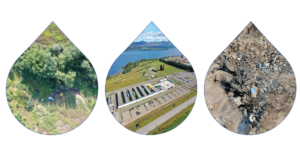Lejac
Fraser Lake
Source’s remediation work was covered in the Prince George Citizen here.
In early 2020, Source Environmental Associates (Source) was retained by Nadleh Whut’en First Nation (Nadleh) and Crown-Indigenous Relations and Northern Affairs Canada (Canada) to complete an Environmental Site Assessment (ESA) at Seaspunkut Indian Reserve (IR) #4, land owned by Nadleh. IR #4 is located on the shore of Fraser Lake and encompasses a total area of 523 acres. Tse Yaz Bunk’ut is the name used by Nadleh for Seaspunkut IR #4.
Source’s work aimed at remediating the site of the “Lejac Residential School” that occupied these lands from 1922-1976. Our work addressed the remaining contamination from previous remediation efforts at the Site. Source refers to the study area simply as “Lejac”, or the Site, as the name “Lejac Residential School” does not accurately reflect the main activities that transpired at the Site. Source acknowledges the difficult issues and legacy associated with Lejac.
Source’s ESA field work, which consisted of soil, water, and vapour investigations, identified four main areas of contamination at the Site. Consequently, a remediation plan was developed to fully delineate and determine the most efficient method to address these contaminated areas. The BC provincial standards, federal guidelines for contaminated sites, and the Yinka Dene ‘Uza’hne’ Water Law (YDWL) were used to define appropriate remediation targets and protection goals for the Site. A main goal of the project is to remediate waters at the Site to meet use-protection standards, which aligns with the YDWL. While the YDWL has no classification system for groundwater, the implementation of the YDWL surface water quality standards ensures the protection of groundwater at the Site.
Remediation plans were developed with the intention of improving the Site to a level suited for Nadleh’s planned future uses. Source proposed that remediation of the Site be conducted over four 12-week periods. As of December 2022, the two sources of contamination with the greatest risk to the Site have been remediated.
